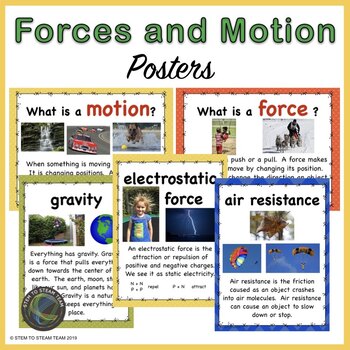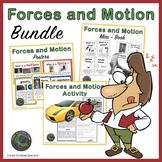Forces and Motion Posters
- PDF
Also included in
- This science resources will provide your students with force and motion examples. There are force and motion posters, a corresponding mini-book, and a force and motion activity that your students will love!Price $10.00Original Price $12.25Save $2.25
- Are you a classroom teacher or a science teacher that needs to save yourself some time? Are you looking for some great visuals for your students?This bundle of science posters can help you with both. They can be used as anchor charts for lessons. They also make great bulletin boards that studentsPrice $75.00Original Price $119.00Save $44.00
Description
This is a set of 18 force and motion posters. They make a good supplement for many Next Generation Science lessons. Each poster has a short definition. Most posters have a graphic to aid in student understanding. Posters for following concepts are included:
What is motion?
What is a force?
balanced and unbalanced forces
applied and natural forces
gravity
friction
magnetism
pressure
buoyancy
air resistance
elastic force
electrostatic force
Newton's Three Laws of Motion
Related Products
• Forces and Motion Mini Booklet
• Forces and Motion: Start Your Engines!
• Third Grade NGSS 3-PS2: Motion and Stability and Forces and Interactions Unit
• Simple Machines Posters / Anchor Charts
• Simple Machines Recording Sheets
• Types of Energy Posters for upper elementary and middle school
• Types of Energy Mini Booklet
Customer Tips:
How to get TpT credit to use towards future purchases:
*Please go to your My Purchases page (you need to login). Next to each purchase you’ll see a Provide Feedback button. Click that and you will be taken to a page where you can give a rating and leave a short comment about the product. Each time you give feedback, TpT gives you credit that you can use towards your future purchases.







